Saludos solidarios comunidad HIVE. Hoy entrego una breve reseña sobre el teatro de Títeres, un oficio que constituye en gran medida mi proyecto de vida. Una primera parte de cómo pudieran ser los orígenes de ésta arte milenaria.
¿Cuándo apareció el títere y el titiritero?
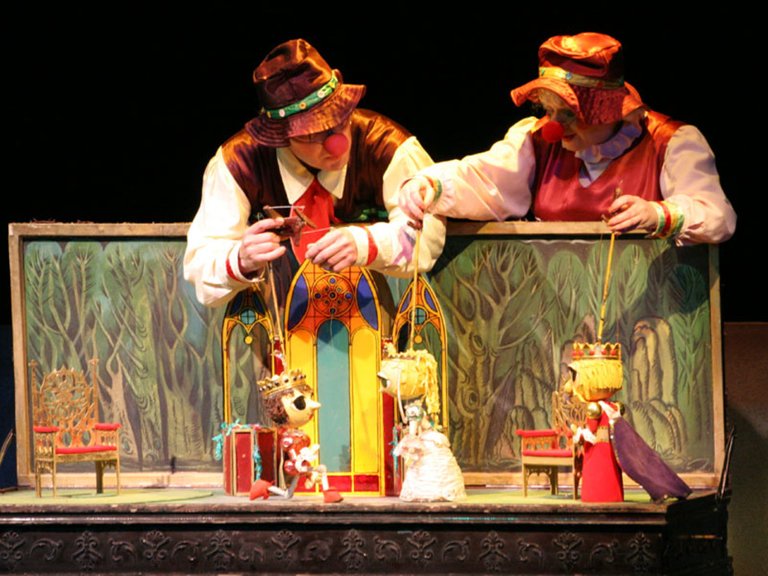
Teatro de titeres ruso en Sarátov.[1]
Parece ser que en diferentes culturas durante distintas épocas -todas muy antiguas- el títere y su manipulador hicieron su aparición ante el resto de los mortales.
Al igual que otras artes, ciencias y religiones, este oficio milenario nació sin diferenciación o conflicto de intereses entre estas disciplinas; puesto que en su compleja elaboración estaban inmersas técnicas para construir con materiales distintos, estética de las formas y colores y el elemento mágico-religioso de su significación como tótem o fetiche.
De igual manera se ínter-relaciona con el teatro y la danza; compartiendo con estas, casi todas sus características menos una; el actor o personaje es un muñeco-sea este hombre, mujer, vegetal u objeto-; es decir quien actúa: Sufre, ríe, baila, etc. No es un ser humano.
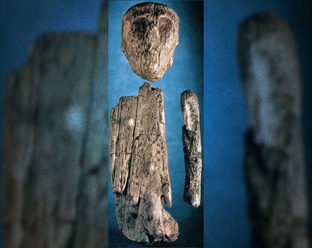
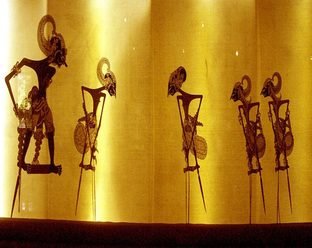
Tal vez -esto es una posibilidad especulativa- tal vez, y durante algunas circunstancias especiales (la llegada de cazadores al pueblo, la siembra y recolección de los frutos, aparición del invierno u otra estación; los truenos, relámpagos, etc, etc.) alguien, o algunos de los histriónicos relatores-chamanes llamaríamos hoy- decidieron utilizar una especie de efigie representativa del acontecimiento o numen involucrado en el fenómeno. Convirtiéndose en los primeros manipuladores de muñecos o titiriteros.[4]
Con el tiempo y por la necesidad que tuvo el pueblo o comunidad de trasladarse de un lugar a otro, el monumento o fetiche estático, protector del pueblo, se hizo itinerante; cada vez que se desplaza la comunidad, éste viajaba con él, y así se pudo “construir” uno más pequeño, es decir el mismo “personaje” más liviano y fácil de manipular.
Esta descripción ficticia (aunque creo posible), solo pretende acercarse a los orígenes de la aparición del teatro de muñecos. Origen compartido según algunos creyentes, con los del teatro y la danza, como hemos señalado arriba.
Pero también hay otra versión de la posible aparición del muñeco manipulado: Un origen totalmente divino.
Ciertamente, basta una pequeña (Y sustanciosa) investigación, para “descubrir”, que en todas las culturas (O casi todas) y en años muy remotos; fueron construidos muñecos o muñecas - y animales-, constituyendo seres o personajes más o menos autómatas, es decir, con movimientos propios pero que obedecían mandos-siempre hay un titiritero que mueve los hilos -evidenciando que los títeres o muñecos autómatas, humanizados o no- fueron parte importante de la construcción de nuestra historia ( Mitología, religión, chamanismo, etc).[5]
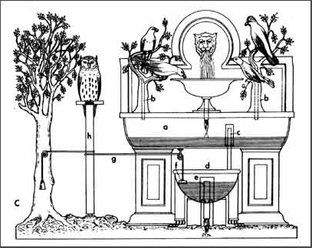
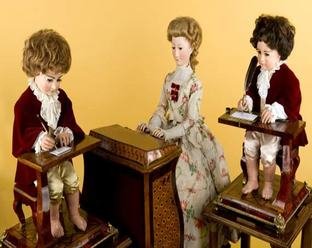
Tomemos un ejemplo afín a nuestra cultura euro-centrista -luego hablaremos de otras culturas por supuesto- se trata de Pandora: (Según el poeta griego Hesíodo: “La Teogonía y Trabajos y Días, Siglos Vlll – Vll a.C”).[8]
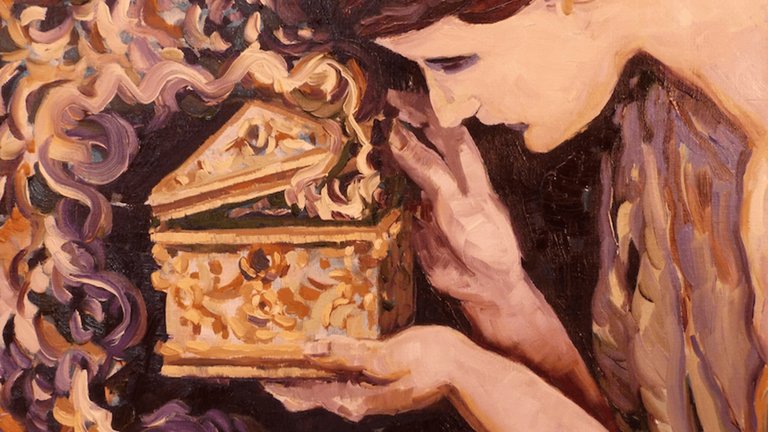
Pasadas las épocas, en muchas otras cultural -reiteramos que habrá espacio para hablar de ellas- se construyeron “muñecos”, los cuales trascendieron su carácter de fetiche; y comenzaron a “tocar asuntos más humanos” (Tal cual sucedió con el teatro y la danza). Fueron entonces preparados espacios distintos a los utilizados en los rituales mágicos religiosos, donde pudieron verse y escucharse las representaciones de estos “personajes”.
El títere fisgón crítico de la sociedad
Mago de la comunicación
Desde que el teatro de títeres comenzó a ocuparse de asuntos más cercanos a la vida de la sociedad, se transformó en un eficaz y penetrante acusador; señalizador de los defectos de la misma.
Y por tal actitud fue mal visto, perseguido y acusado por las autoridades y poderes hegemónicos establecidos.
Su increíble capacidad de trasmitir a todas las capas sociales, cualquier tópico inherente a su realidad, lo inscribe (Y aún hoy lo es) como una de las artes de comunicación mas contundentes, abarcando todo el espectro y grupos etarios de una sociedad dada.
antiquísimos tiempos fue y sigue siendo un gran aliado de las causas nobles de los pueblos, sin perder su otra gran capacidad: ¡La de hacernos reír hasta llorar!
Visión de un funcionario español del siglo XVlll:
Gaspar Melchor Jovellanos, funcionario de la corona española en el siglo XVlll, impele a las autoridades para “desterrar enteramente a los títeres, Matachines, y afines de la escena española”.[10]
Entonces, esa otra parte esencial para teatro - tanto de muñecos como actoral- como lo es el “público”, empezaba a configurarse, y la gente ya no iban solamente a congratularse con los dioses o númenes; ahora podían disfrutar, reír y/o recrease con las ocurrencias presentadas por estos muñecos, quienes le mostraban historias mucho más cerca a la cotidianidad; de su entorno social. Greetings in solidarity with the HIVE community. Today I deliver a brief review of the Puppet Theater, a craft that is largely my life project. A first part of how could be the origins of this ancient art. It seems that in different cultures during different times -all very ancient- the puppet and its manipulator made their appearance before the rest of the mortals. Like other arts, sciences and religions, this millenary craft was born without differentiation or conflict of interests between these disciplines; since in its complex elaboration were immersed techniques to build with different materials, aesthetics of shapes and colors and the magical-religious element of its significance as a totem or fetish. In the same way it is interrelated with theater and dance; sharing with these, almost all its characteristics except one; the actor or character is a doll - be this man, woman, vegetable or object-; that is to say, the one who acts: suffers, laughs, dances, etc. It is not a human being. Perhaps - this is a speculative possibility - perhaps, and during some special circumstances (the arrival of hunters to the village, the sowing and harvesting of fruits, onset of winter or other season; thunder, lightning, etc, etc.) someone, or some of the histrionic storytellers - shamans we would call today - decided to use some sort of effigy representative of the event or numen involved in the phenomenon. Becoming the first puppet manipulators or puppeteers.[4] This fictitious description (although I believe possible), only pretends to approach the origins of the appearance of the puppet theater. An origin shared, according to some believers, with those of theater and dance, as we have pointed out above. But there is also another version of the possible appearance of the manipulated doll: A totally divine origin. Certainly, it is enough a small (And substantial) research, to "discover", that in all cultures (Or almost all) and in very remote years; were built dolls or dolls -and animals-, constituting beings or characters more or less automatons, that is, with their own movements but obeying commands -there is always a puppeteer who pulls the strings- proving that the puppets or dolls automatons, humanized or not- were an important part of the construction of our history (Mythology, religion, shamanism, etc).[5] Let's take an example akin to our Euro-centric culture - we'll talk about other cultures later of course - it's about Pandora: (According to the Greek poet Hesiod: "The Theogony and Labours and Days, Centuries Vlll - Vll B.C.")[8] After the epochs, in many other cultural - we reiterate that there will be space to talk about them - "puppets" were built, which transcended their fetish character; and began to "touch more human issues" (as happened with theater and dance). Spaces other than those used in religious magic rituals were then prepared, where the representations of these "characters" could be seen and heard. Since the puppet theater began to deal with issues closer to the life of society, it became an effective and penetrating accuser; pointing out the defects of it. And for such an attitude he was frowned upon, persecuted and accused by the authorities and established hegemonic powers. Its incredible capacity to transmit to all social strata, any topic inherent to its reality, inscribes it (and still is today) as one of the most forceful communication arts, covering the entire spectrum and age groups of a given society. In ancient times it was and still is a great ally of the noble causes of the people, without losing its other great capacity: that of making us laugh until we cry! Gaspar Melchor Jovellanos, an official of the Spanish crown in the XVlll century, impels the authorities to "entirely banish puppets, Matachines, and the like from the Spanish scene".[10] Then, that other essential part for theater -both puppets and actors- as the "public", began to take shape, and people no longer went only to congratulate themselves with the gods or númens; now they could enjoy, laugh and / or recreate with the occurrences presented by these puppets, who showed stories much closer to the everyday life; of their social environment. A second part will follow; until then.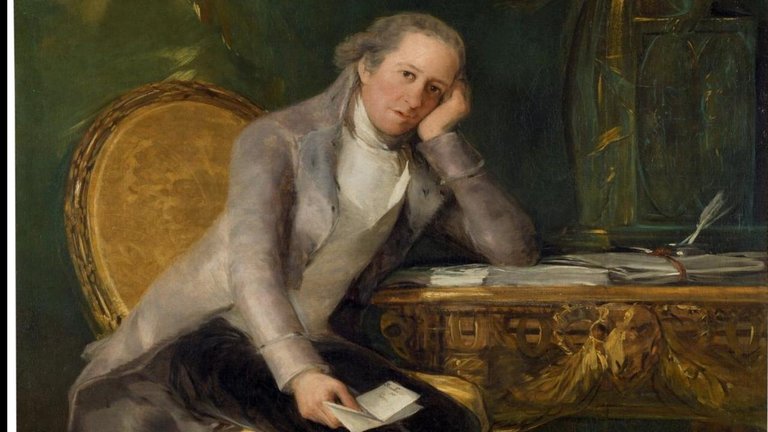
Gaspar Melchor Jovellanos.[11]
Trascurridos varios centenares de años, el títere había conquistado los escenarios de los diferentes continentes, con su mundo fantástico, pero está cerca de las miserias y bondades de los pueblos, “reinventando” la farsa, ironía y la satírica como método de crítica a las sociedades humanas; sus creadoras.

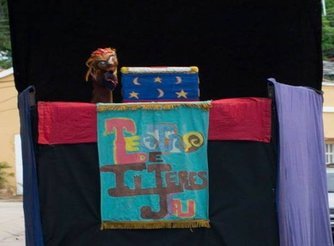
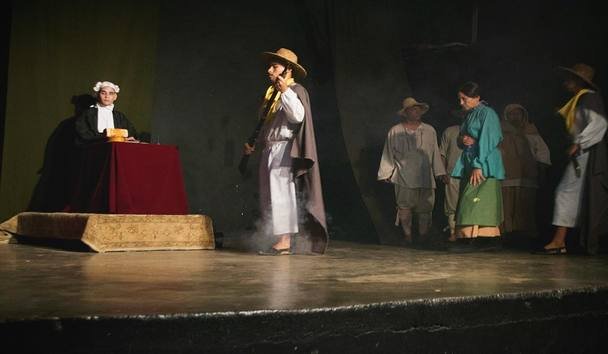
Fotografías de la fundación teatro de títeres Jau Jau.
English Version
When did the puppet and the puppeteer appear?

Russian puppet theater in Saratov.[1]


Over time and because of the need for the people or community to move from one place to another, the static monument or fetish, protector of the people, became itinerant; every time the community moved, it traveled with it, and so a smaller one could be "built", that is, the same "character", lighter and easier to manipulate.



The snooping puppet critical of society.
Magician of communication.
Vision of a Spanish civil servant of the XVlll century:

Gaspar Melchor Jovellanos.[11]
After several hundred years, the puppet had conquered the stages of the different continents, with its fantastic world, but it is close to the miseries and goodness of the people, "reinventing" the farce, irony and satire as a method of criticism of human societies; their creators..



Photographs of the Jau Jau puppet theater foundation..
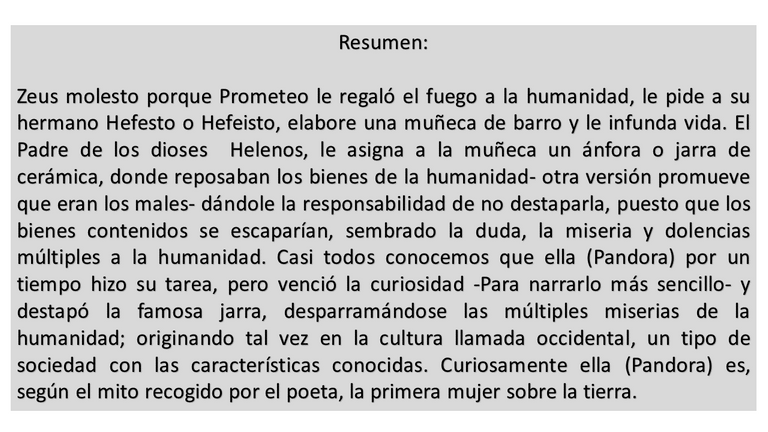



Nos presentas una buena síntesis histórico-cultural del origen del títere y su desarrollo. Es interesante la observación que haces de su interrelación con el mito y el rito, y con el teatro y la danza. El teatro de títeres conserva su magia en el tiempo, y llama la atención de niños y adultos. Cuando te leía y hacías referencia al autómata, recordé ese hermoso homenaje a esa figura y al cine en sus orígenes que nos ofrece el cineasta estadounidense Martin Scorsese en su filme Hugo, del 2011. Sigue con tu pasión de titiritero, @camborio.
@elcomentador es un Proyecto de Curación de Comentarios. Nuestra finalidad es recompensar aquellos comentarios que aporten valor a las publicaciones y fomentar el hábito de comentar en Hive.
Si quieres saber más sobre nuestra filosofía y cómo optar a un voto por parte de nuestra cuenta, lee nuestro post de introducción y únete a nuestro servidor de Discord donde podrás interactuar con otros comentadores, educarte sobre el arte de comentar, enterarte de iniciativas y mucho más.
Visita la etiqueta #hivecomments (en la sección reciente) y vuélvete un experto.
Gracias por dedicarles unos minutos a la reseña de títeres.
estoy pensando-en cuanto pueda- realizar otro escrito dedicado al teatro de muñecos al sur del estado Bolívar. espero seguir conversando con usted. Hasta pronto.
Congratulations @camborio! You have completed the following achievement on the Hive blockchain and have been rewarded with new badge(s) :
Your next payout target is 250 HP.
The unit is Hive Power equivalent because your rewards can be split into HP and HBD
You can view your badges on your board and compare yourself to others in the Ranking
If you no longer want to receive notifications, reply to this comment with the word
STOPCheck out the last post from @hivebuzz:
¡Felicidades! Esta publicación obtuvo upvote y fue compartido por @la-colmena, un proyecto de Curación Manual para la comunidad hispana de Hive que cuenta con el respaldo de @curie.
Si te gusta el trabajo que hacemos, te invitamos a darle tu voto a este comentario y a votar como testigo por Curie.
Si quieres saber más sobre nuestro proyecto, acompáñanos en Discord: La Colmena.